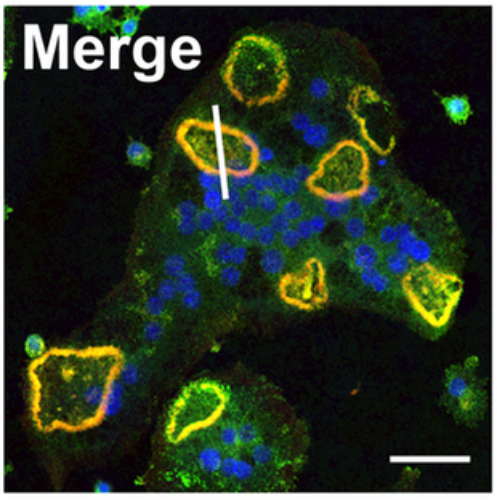BAR Proteins PSTPIP1/2 Regulate Podosome Dynamics and the Resorption Activity of Osteoclasts.
Bone resorption in vertebrates relies on the ability of osteoclasts to assemble F-actin-rich podosomes that condense into podosomal belts, forming sealing zones. Sealing zones segregate bone-facing ruffled membranes from other membrane domains, and disassemble when osteoclasts migrate to new areas. How podosome/sealing zone dynamics is regulated remains unknown. We illustrate the essential role of the membrane scaffolding F-BAR-Proline-Serine-Threonine Phosphatase Interacting Proteins (PSTPIP) 1 and 2 in this process. Whereas PSTPIP2 regulates podosome assembly, PSTPIP1 regulates their disassembly. PSTPIP1 recruits, through its F-BAR domain, the protein tyrosine phosphatase non-receptor type 6 (PTPN6) that de-phosphophorylates the phosphatidylinositol 5-phosphatases SHIP1/2 bound to the SH3 domain of PSTPIP1. Depletion of any component of this complex prevents sealing zone disassembly and increases osteoclast activity. Thus, our results illustrate the importance of BAR domain proteins in podosome structure and dynamics, and identify a new PSTPIP1/PTPN6/SHIP1/2-dependent negative feedback mechanism that counterbalances Src and PI(3,4,5)P3 signalling to control osteoclast cell polarity and activity during bone resorption
Back to list
